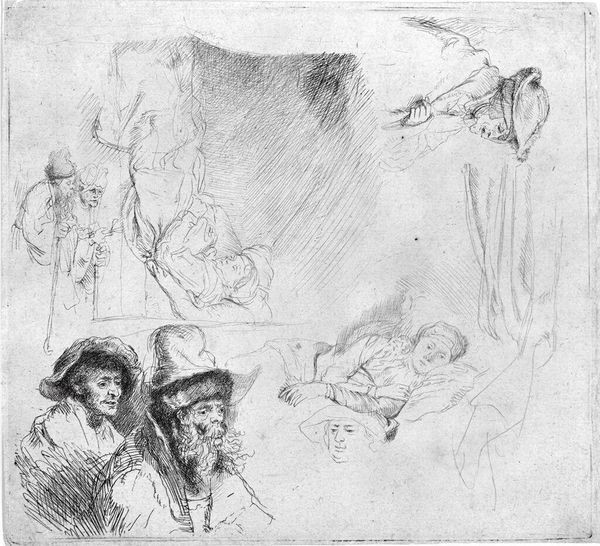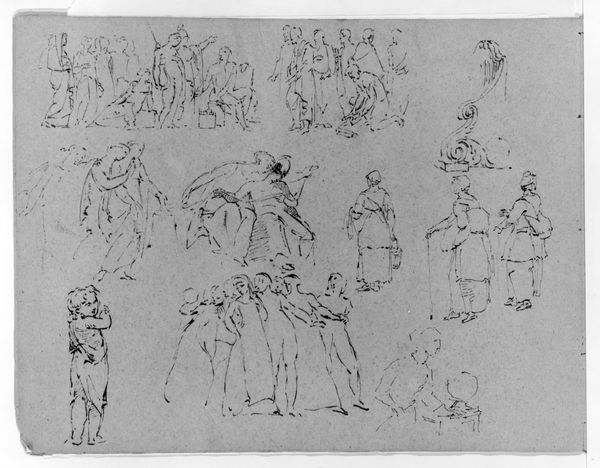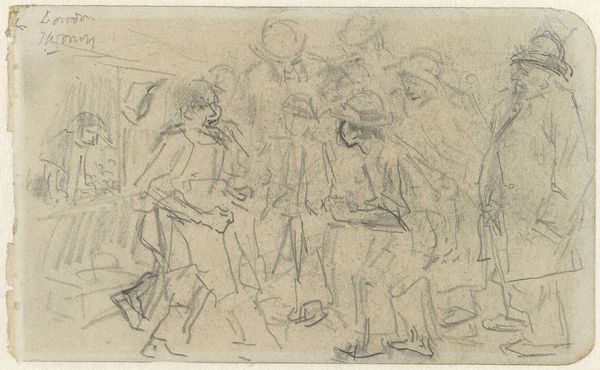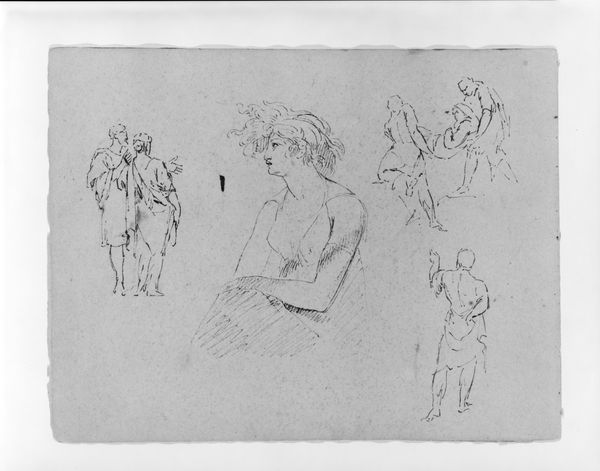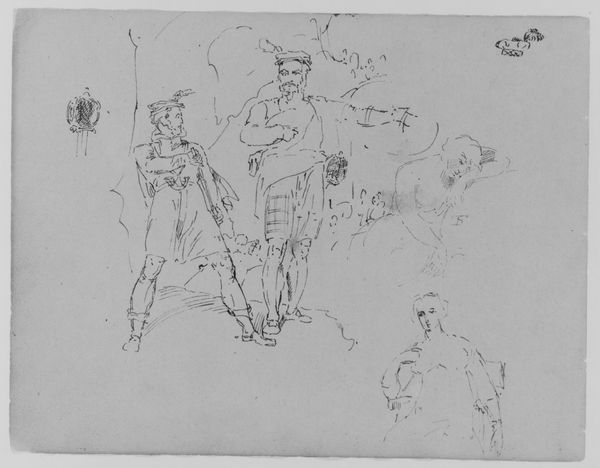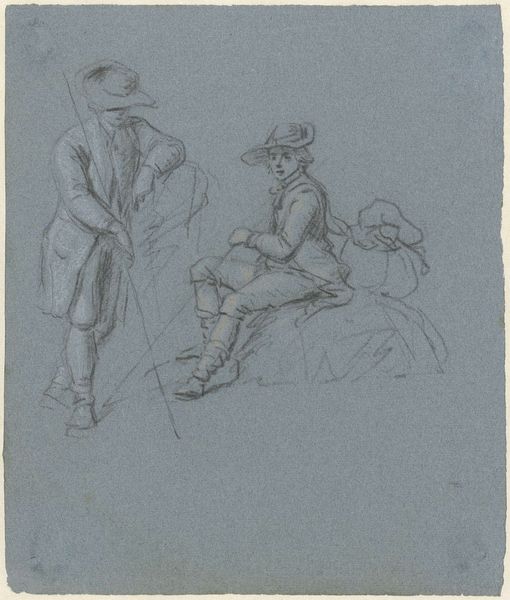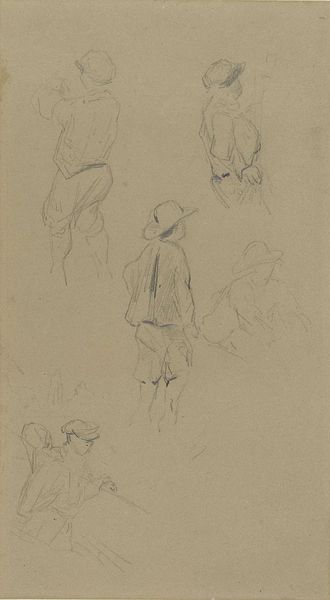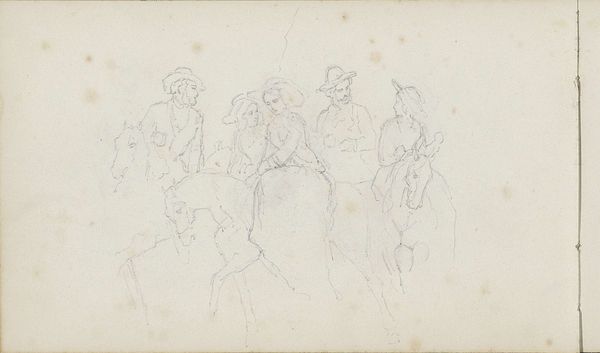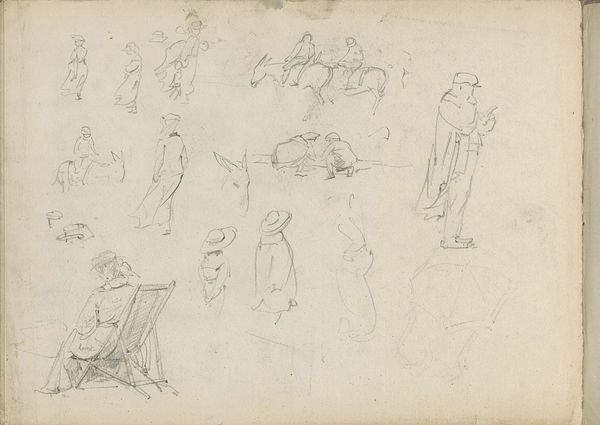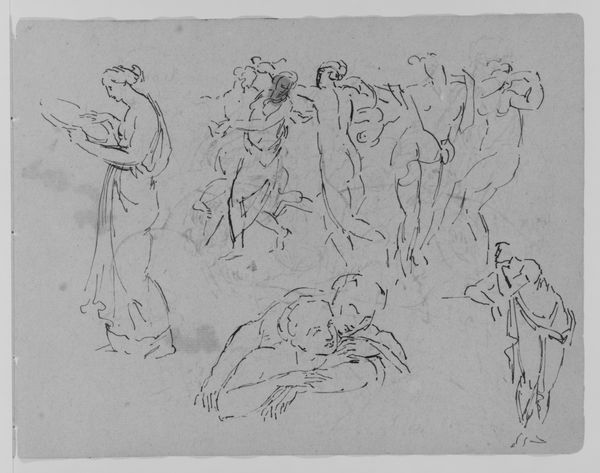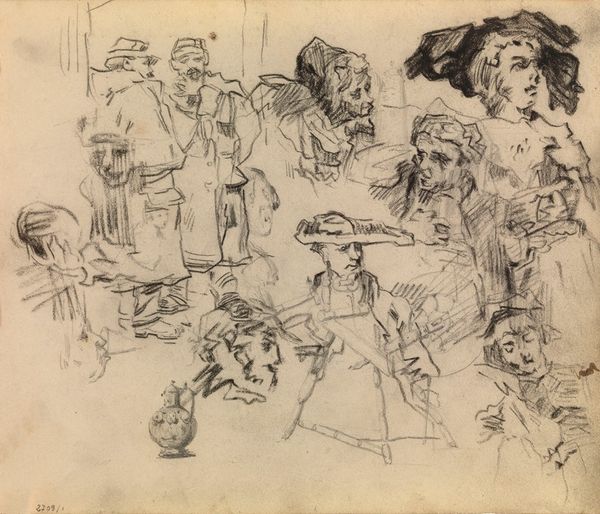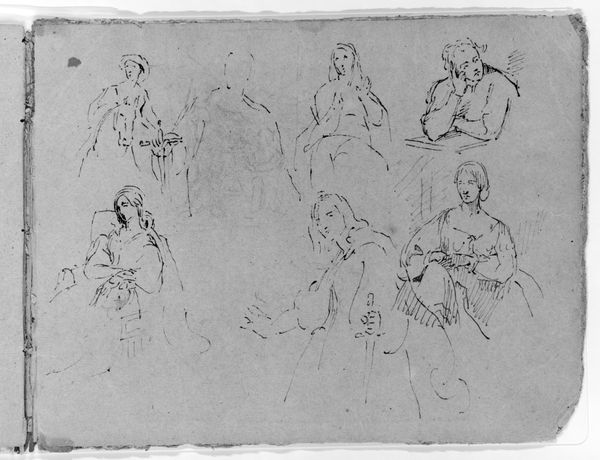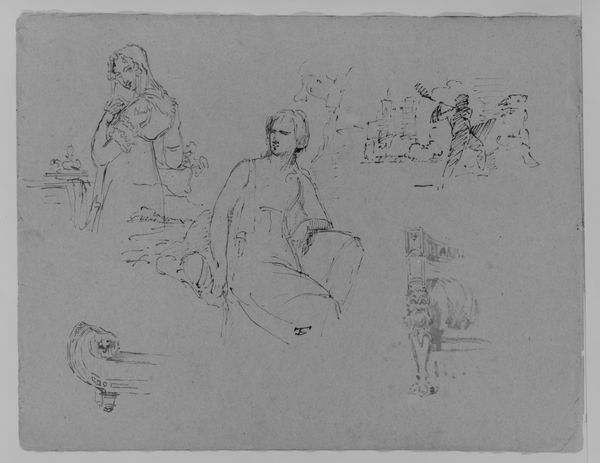
Mand og kvinde siddende ved et æsel. I øverste venstre hjørne skitse af en kvinde med barn. Øverst til højre en kurv. Ved Civita la Vigne. 1853
0:00
0:00
Dimensions: 145 mm (height) x 200 mm (width) (bladmaal)
Curator: Looking at this pencil drawing, what strikes you first? Editor: The immediate impression is one of stillness and quiet contemplation. It feels like a brief pause captured in time, sketched with a light hand and minimal detail. There's a real sense of gentle observation, wouldn't you agree? Curator: Absolutely. This work, titled "Man and woman sitting by a donkey," was sketched by Ernst Meyer in 1853. Note the additional sketches; a woman with a child and a basket above the primary grouping of the man, woman and beast of burden, with the inscription “By Civita la Vigne.” Editor: Meyer clearly felt drawn to this grouping. There’s something deeply human in their postures, especially the woman’s calm expression. Are there established meanings we can apply to the inclusion of a donkey, a basket, and especially a mother holding a baby in this image? Curator: Given the period and the artist’s clear romantic inclination, the donkey here could serve as a generalized emblem of rural Italian life and hard labor. The inclusion of this motif situates the figures firmly within the realities of nineteenth century agrarian society and Meyer’s broader genre of depicting Southern European peasant life. Meyer became interested in the lifestyles and political activity of disenfranchised communities; do you imagine those factors could play into our reading of this composition? Editor: Possibly, yes. Thinking symbolically, the basket overhead might symbolize the burdens these individuals carry, or perhaps the potential harvest from their work, offering a glimmer of hope amidst a somewhat difficult life. Also, I wonder whether Meyer consciously positions the woman and child as figures in contrast to the central group to highlight generational challenges. Curator: That interpretation would suggest that Meyer's sympathies certainly lay with the peasant class. This piece resonates beyond the individual figures; it speaks to the socio-political backdrop of the time, an era marked by enormous social upheaval and transformations in artistic representation. Editor: Right. It makes you consider the cyclical nature of work, the simple dignity of rest, and even broader philosophical questions of human existence. It captures both their momentary experience and enduring representations. Curator: Indeed. This piece is more than just a preliminary sketch; it’s a small window into the shared struggles and symbolic weight that those struggles carried in romanticist cultural consciousness. Editor: Precisely. Seeing it in that light makes all the difference for me.
Comments
No comments
Be the first to comment and join the conversation on the ultimate creative platform.
